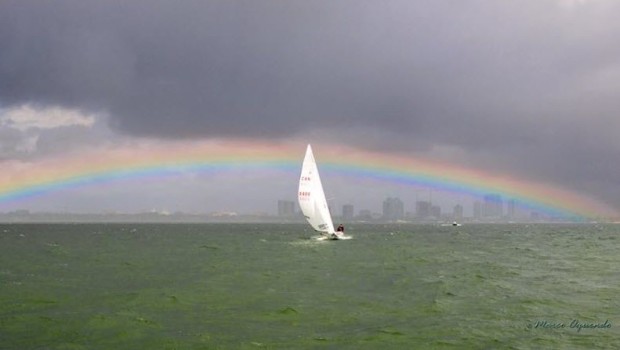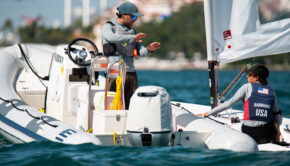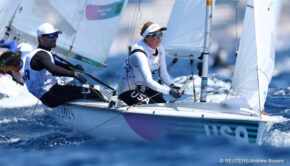Reasons why the Star Class is growing again
Published on May 10th, 2015
by Connie Bischoff and Barbara Beigel-Vosbury
The history of the Star Class is very rich, with this sloop-rigged keelboat designed in 1910, and being an Olympic class from 1932 to 2012. But when the Class became non-Olympic, there was concern that the class could remain vibrant.
Unlike most modern racing boats, it has no spinnaker, and its mainsail is larger in proportional size than any other boat of its length. But thanks in part to the Olympics, the Stars had been famous for attracting the best sailors in the world, especially the strong ones, due to the muscle and mass needed to excel.
What would happen now to the Star Class?
This is the Star Class Rehab Toolbox:
• New national officers with name recognition
• Changing some of the rules
• Showing loyalty to the long time fans
• Making racing fun for new participants
• Creating a “series” of regattas to give sailors more of a reason to participate
• A great sponsor who is willing to hang in there
• Social Media to spread the word
Olympians Lars Grael (BRA) and Mark Reynolds (USA) have taken the helm. Lars is the new International Class President, and Mark is the International Class Secretary. The two have pledged to keep the class a shining Star!
Since 1952, the Stars have been coming to Miami for the Bacardi Cup, along with a few other weekend regattas hosted by Coral Reef Yacht Club. After some brainstorming between the Star US Class officers, local Miami Star sailors and CRYC RC folks, they decided to make some rule changes to increase the popularity of the Miami regattas.
The older Star sailors had complained about the starting line challenge when sailing against competitive World Champs and Olympians. They thought that the super fast sailors were more aggressive at the starting line because they could always “drop” the race if they were OCS. The “committee” decided to test eliminating the “drop”. Another change is that radios are now allowed onboard in Miami, which the Class had never allowed. In the past, the sailors did not know they were OCS until they reached the Weather Mark and they could not call for help in case of an emergency. Now older sailors are happy and younger ones are too.
The “committee” led by Stu Hebb, also copied Biscayne Bay Yacht Club’s Etchells Jaguar Cup, a series of weekend races with overall awards. Series is the magic word. The Star regattas in Miami, except for the Zagarino Masters, would be combined with a four day Mid-Winters regatta at the end. Each team could drop one of the two day regattas but the Mid-Winters could not be dropped and would count twice.
Now they needed financial support… a great sponsor. EFG International, a global private banking group headquartered in Zurich, Switzerland operates in around 30 locations worldwide and loves the Star. The Miami regattas became the Star Winter Series “Presented by EFG International” aka SWS.
In this world of social media, the last “tool in the box” was not only a website but a SWS Facebook page. With photos from Marco Oquendo, the numbers of followers is from 7000-9000 depending on the “action”.
Results: The participation for each regatta has grown with more international competitors and young sailors. The Star Class is alive and well. The actions taken could also be applied to other aging classes.









 We’ll keep your information safe.
We’ll keep your information safe.